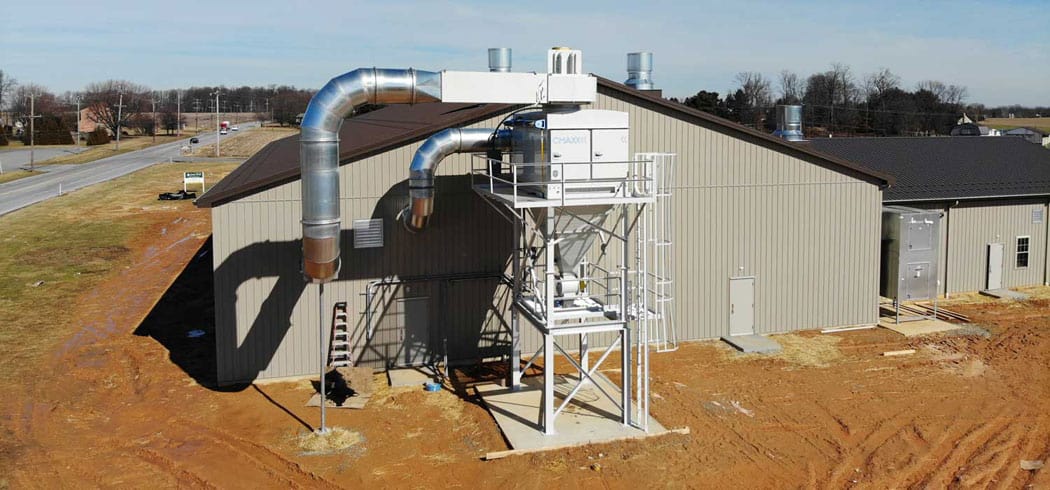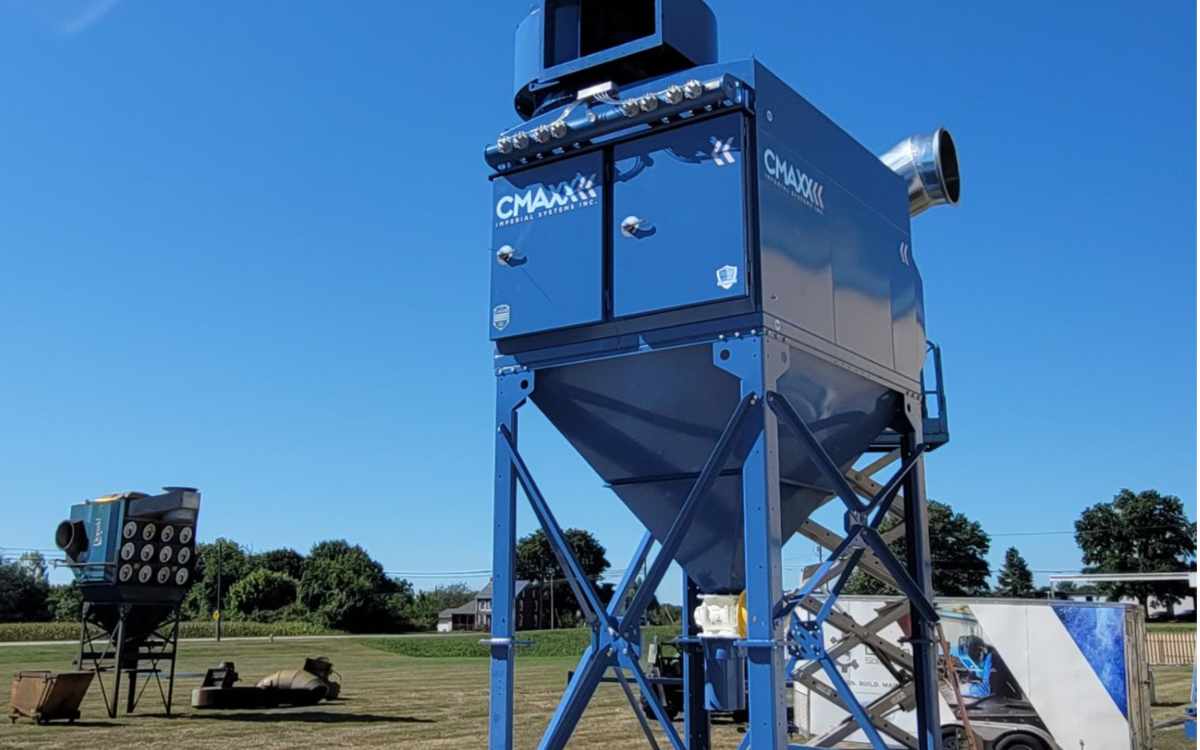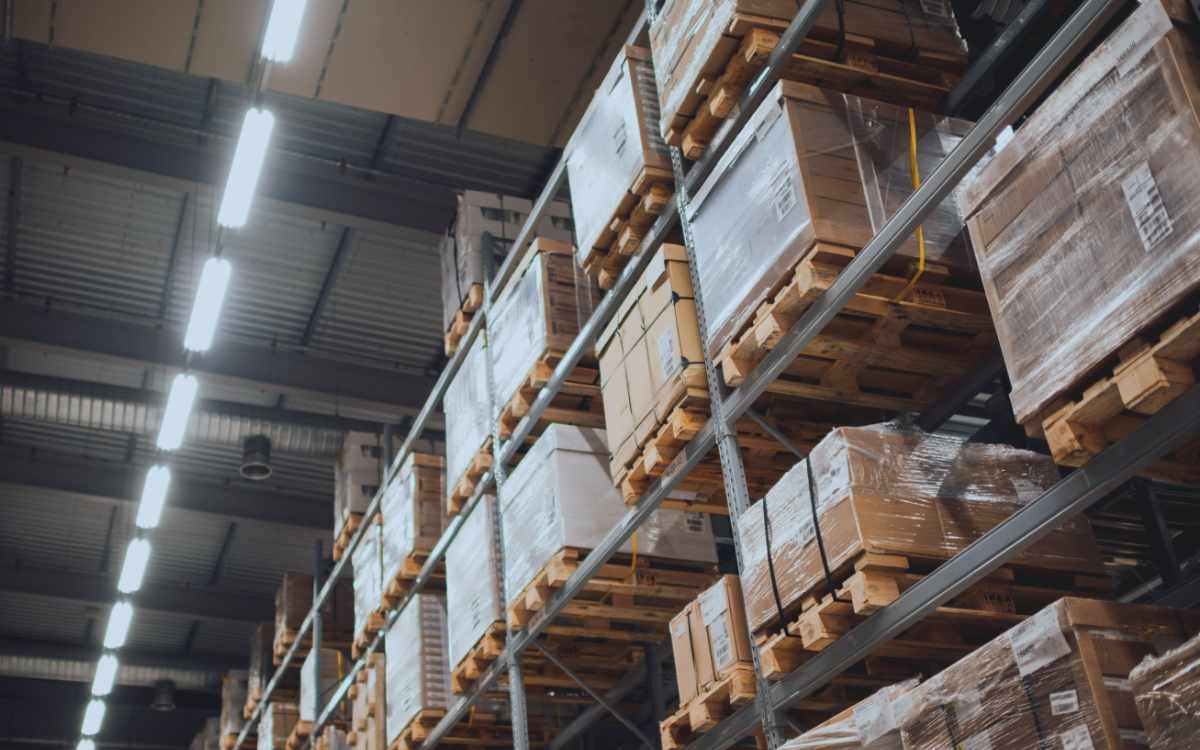How do you prevent falls from your dust collector? Often, people need to access doors and panels above ground level. So ladders or stairs are a requirement. But how do we make sure our dust collectors meet all OSHA ladder or stair safety rules?
OSHA recognizes several types of fall protection. For dust collection systems, expect to see ladders, especially on tall baghouses, or stairs with platforms on a cartridge dust collector.
OSHA Ladder Safety for Dust Collectors
OSHA has increased its focus on injuries caused by falls. Fall protection affects almost all industries. Specifically for a dust collector, this rule will affect the ladders or stairs used to access the doors and panels. Because of this, employers must make dust collector ladders and stairs safe for worker access.
OSHA recently updated and made changes to its personal fall protection standard. However, not all fall safety standards will affect your dust collector. For instance, some dust collectors have a set of stairs leading to a platform. From the platform, workers can access the doors to the dust collector filters.
Further, if you have a tall dust collection system like a baghouse, you may use a ladder to access it. Many ladders for baghouse dust collectors have safety cages. OSHA has changed some of the rules about safety cages. They have also changed some of the rules about platforms and stairs. So both OSHA fall safety changes can affect your dust collector in the future.

Why Do We Need New Fall Safety Rules for a Dust Collector?
OSHA estimates that almost 350 workers die each year in fall accidents. OSHA’s fall protection standard affects dust and fume collection systems. These usually have hoppers under them. This makes them tall enough to require fall safety.
The standard says that workers need protection if they could fall four feet or more. In construction, this limit is six feet. Construction has traditionally had different standards than the general industry. This includes dust collection and other products that need access.
Citations plaque the construction industry for falls and related injuries. The new regulation offers employers more, not fewer, choices in how they use fall protection.
Ladders and stairs for dust collector access need to meet these regulations. Most dust collectors stand on legs above a hopper, or you need a ladder to reach the access doors.
What are the Options for OSHA Fall Safety?
The new fall and ladder safety regulation brings the construction industry in line with other industries, making all the different regulations easier to follow. It also cuts off a few options that allowed certain exemptions from fall protection.
First of all, each work surface above 42 inches must have a guard rail. Stairways need to be uniform and safe from slips. The CMAXX dust collector meets these standards with heavy-duty stairs, safety railings that exceed the requirements, and a safe working platform.
Your BRF or other baghouse needs fall safety that meets the new standards. Since one can usually access these taller dust collectors with a fixed ladder, new ladder safety standards apply. Above 24 feet, all fixed ladders require an approved safety system or personal fall arrest system.
Cages will not be considered certified ladder safety, or ladder safety of any kind. OSHA set the date as 2036 for the point at which all ladders, including those for dust collectors, must have proper personal fall arrest or other approved safety system.
Why is OSHA phasing out ladder cages as a safety device? Based on research, cages don’t actually make falls safer and can cause worse injuries. If your dust collector installation includes a new ladder, it requires an approved fall protection system even if you have a cage. This also applies if your dust collector ladder has damage and requires repair.
Your Dust Collector Needs OSHA Approved Fall Saftey
Many companies sell approved fall safety devices. This can include a PFPS (personal fall protection system), which usually attaches the worker to a fall arrestor. This allows them to attach their safety harness to the dust collector ladder.
One danger to watch out for is that ropes or cables that support a worker can catch on the edge of a surface. This can keep the cable from sliding like it’s supposed to, or it could damage it. While accessing your dust collector, make sure safety devices don’t rub or catch on other surfaces.
If you use a cartridge dust collector, you may access it with a ladder or stairs. A baghouse probably requires a ladder. Both ladders and stairs must meet safety standards. If your dust collector stairs have sturdy safety rails, they should be fine. If your ladder is more than 24 feet tall and protected by any type of cage, you’ll eventually need to install a personal fall protection device. Cages will no longer be approved safety devices.
To keep up with OSHA standards, we include new recommended safety processes before they’re required. If you have any questions about how to make sure your existing dust collection equipment is in line, give us a call or email today.
If you have other equipment accessed with stairs or ladders, and you’re not sure if you will be okay with OSHA’s ladder and fall safety standards, we can help you find an occupational health and safety professional. Process hazard analysis specialists also make a career of figuring out situations like this.


